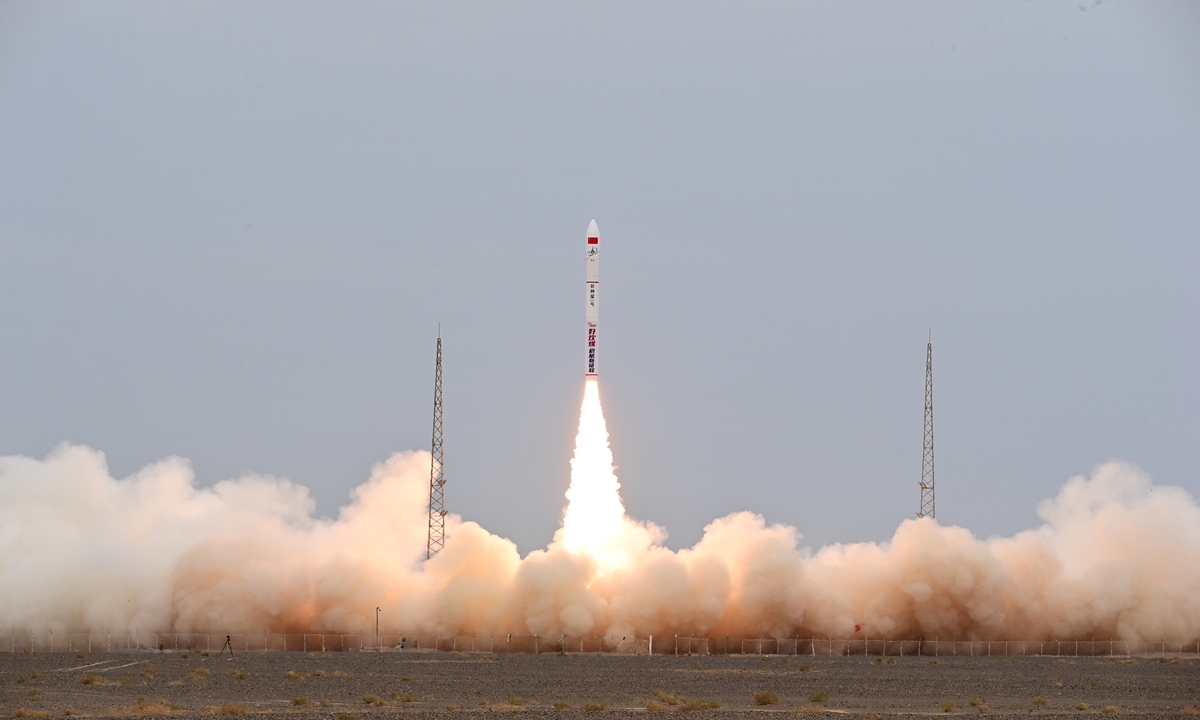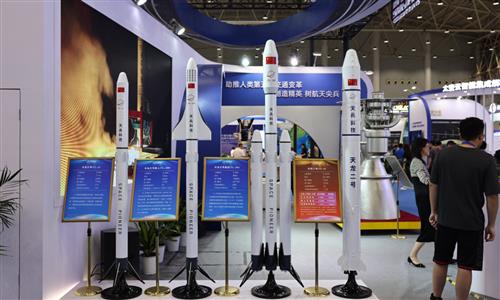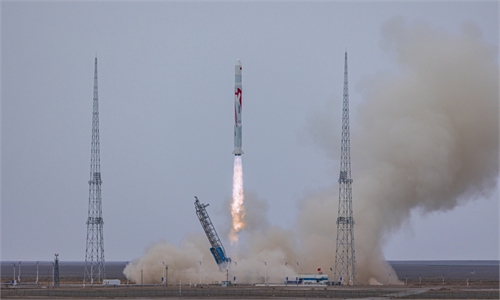Chinese private aerospace firms enhance delivery capability to meet rising market demand

Domestic carrier rocker developer Galactic Energy launched its seventh Ceres 1 rocket on Thursday, sending seven satellites into orbit from the Jiuquan Satellite Launch Center in Northwest China. Photo: Courtesy of Galactic Energy
China's commercial aerospace sector has witnessed accelerated growth since the start of this year marked by high-density rocket launches and cutting-edge satellites sent to their orbits. Private firms, a rising force in propelling the nation's space industry, are ramping up efforts to foster capabilities to meet market demand, helping shape a mature commercial loop.
Domestic carrier rocker developer Galactic Energy launched its seventh Ceres 1 rocket on Thursday, sending seven satellites into orbit, the latest effort by a Chinese private firm to expand its capabilities in rocket research and development (R&D) and launches.
It was the second launch within a month for Galactic Energy and the seventh successful flight for the rocket model.
The Ceres 1 rocket has to date served 15 commercial satellite clients, sending 28 satellites into orbit that offer support for Earth observation, meteorological monitoring, popular science education and others, according to a statement the company sent to the Global Times.
Having kicked off its high-density delivery and launch cycle for the second half of the year, Galactic Energy aims to complete three launches in August including one launch that will be conducted at sea toward the end of the month, a PR representative from the firm told the Global Times.
High-density launch is the path a rocket firm has to take for its products to mature from the lab to large-scale production.
Prior to Thursday's launch, the Beijing-based start-up had accomplished six consecutive launches after making its debut flight in November 2020 from the Jiuquan Satellite Launch Center in Northwest China.
Ceres 1 is a four-stage launch vehicle independently designed by Galactic Energy. Solid engines are used in the first, second and third stages, while advanced liquid upper stage is the fourth one.
The company is also conducting R&D into liquid rocket technology .
In June, it announced that the Pallas 1, a larger, reusable liquid-propellant rocket model, has completed the inter-stage separation test, verifying the correctness of the separation scheme.
With consecutive successful launches on the track, private firms are entering a new R&D cycle and accelerating the pace of shaping their commercialization loop, expert said.
Huang Zhicheng, a Chinese expert in aerospace science and technology, told the Global Times that high-quality private aerospace enterprises have demonstrated strong innovation capabilities and development potential over the past few years, and have become an important force in promoting the country's commercial aerospace innovation.
"They are quickly catching up with state-owned players which have long-time accumulated advantage, even surpassing state-owned players in certain area," Huang noted.
In July, another private rocket firm - LandSpace - launched the world's first liquid oxygen, liquid methane carrier rocket from Jiuquan. The launch put China in the front of the global space race for methane-based rockets.
Creating less pollution and delivering better safety outcomes at a lower cost, methane-liquid rockets are viewed as a suitable propellant for reusable rockets, which is the objective for multiple rocket firms.
"With the improvement of policy environment and business getting mature, private players will have more room for step up further innovation," Huang said.
In China, the environment for commercial aerospace development continues to improve. It is gradually shifting from a mode dominated by basic manufacturing and product R&D to a new stage driven by the market and new applications, Yuan Jie, chief executive officer of the China Aerospace Science and Industry Corp, said at the recent 9th China (International) Commercial Aerospace Forum held in Wuhan, capital of Central China's Hubei Province in July.
With domestic economic recovery on the path in the post-COVID period, commercial space sector has shown an upward momentum, according to a 2022 China Commercial Aerospace Industry Investment Report released in April.
Since 2015, the year that is deemed as the first year for China's domestic commercial space sector, the number of registered and operating companies in China has reached 433, covering various fields such as rocket manufacturing, satellite R&D, and space technology exploration, data showed.



